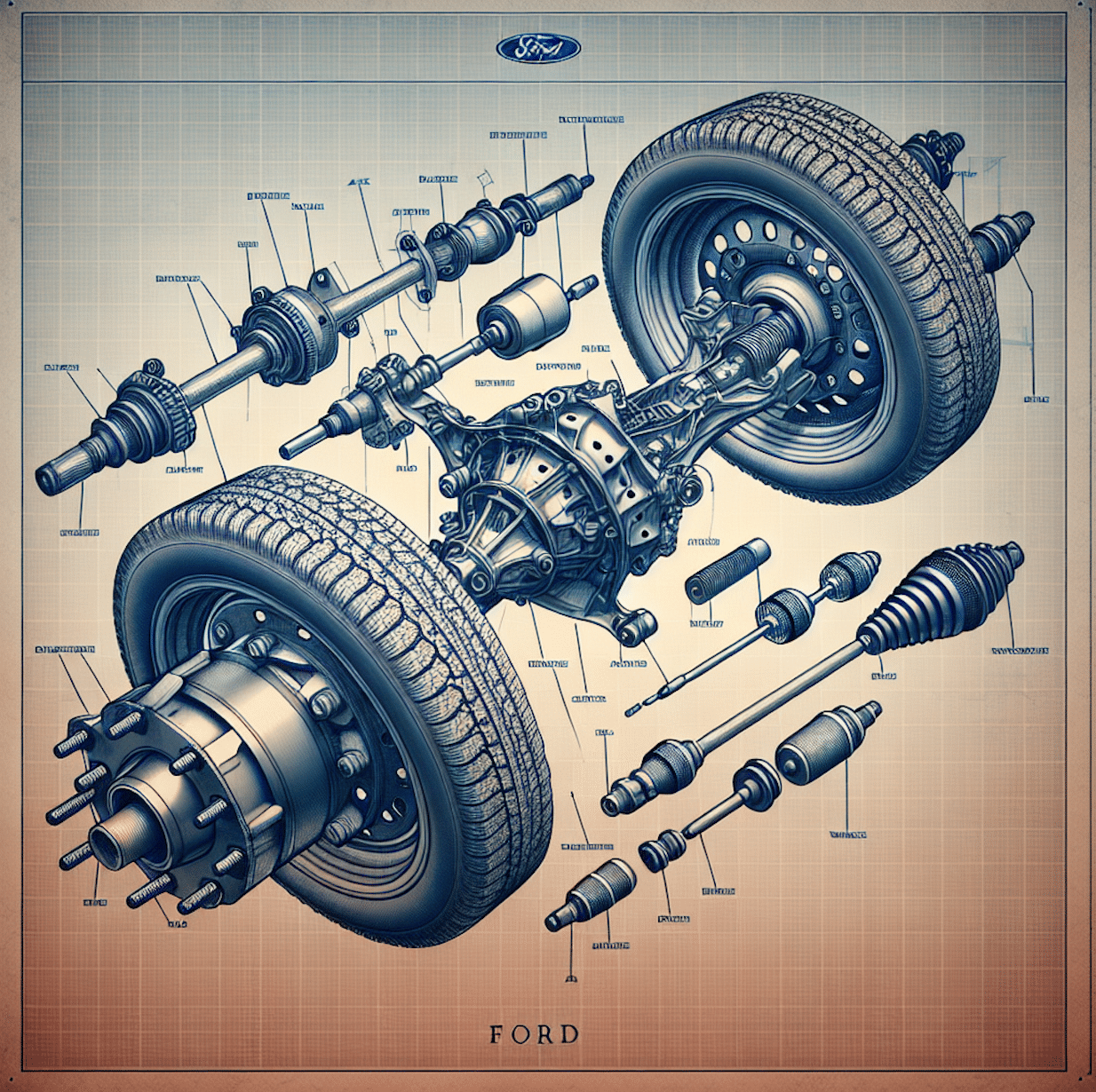When it comes to classic Ford vehicles, the rear end – or differential – plays a significant role in the performance of the car. Among enthusiasts, the 8 inch Ford rear end is a popular choice for a variety of applications due to its balance of strength, weight, and availability. Identifying an 8 inch rear end is crucial for proper maintenance, restoration, or modification. In this guide, we take a closer look at how to identify the Ford differential, its specifications, and why it might be the right choice for your classic Ford.
What is a Ford 8 inch rear end?
The Ford 8 inch rear end was introduced in the late 1950s and saw production through the early 1980s. It was used in a wide range of Ford vehicles, from compact cars to light-duty trucks. The name refers to the diameter of the ring gear, which is a key component of the differential. Despite being smaller and somewhat lighter than the renowned Ford 9 inch rear end, the 8 inch is still quite durable and suits a variety of driving conditions and applications.
Identifying an 8 Inch differential in Ford
If you’re planning to repair a vehicle or you want to buy one for yourself or for someone else, it’s crucial to tell if that is the real differential or not. Ford, at that time, was well-known for well-built pickups and trucks. That’s why their old versions of differentials last for decades and never break.
The center section
The quickest way to determine if you’re dealing with an 8 inch rear end is to look at the center section, sometimes referred to as the ‘pumpkin’ or ‘chunk’. Unlike the Ford 9 inch, the 8 inch has a smooth, round shape. When you find this smooth cover, you’re likely on the right track.
The third member
The Ford 8-inch uses a third member that houses the differential gears. It is bolted to the axle’s housing from the front, which differentiates it from the 9-inch, whose third member is accessed by removing it from the rear of the axle.
Bolt count
On an 8 inch differential, there are 10 bolts securing the third member to the axle’s housing. By contrast, the 9 inch has 10 bolts plus an additional guide pin, making it a total of 11 attachment points.
Casting numbers
Casting numbers on the third member can also be an identifier. These numbers include the main case, front pinion support, and carrier. You can find listings online or use a Ford parts identification book to determine the exact model year and applications of the rear end based on these numbers.
Gasket shape
The shape of the gasket between the third member and the axle housing is another clue. The 8 inch rear end typically has a nearly oval gasket with rounded corners, while the more common 9 inch has a distinct shape with a bulge on one side.
Specifications and Gear Ratios
One of the vital factors in identifying the 8 inch rear end is knowing the gear ratios that were available. The gear ratios ranged from around 2.79:1 to 4.13:1, with many variations in between. These ratios will determine the vehicle’s acceleration, top speed, and fuel efficiency. For those looking to modify their 8-inch differential, aftermarket gear sets can expand these options even further.
Why choose an 8-inch version?
While some truck differentials work well, there are many reasons behind the love of the famous Ford ones. In fact, the version we talk about today has many advantages over others. So, here is what it’s better for many of us.
Adequate strength
While it doesn’t have the same heavy-duty reputation as the Ford 9 inch, the 8 inch rear end is still quite strong and can handle moderate amounts of horsepower and torque, which makes it suitable for many street applications and lighter performance use.
Variety of applications
The widespread use of the 8 inch rear end across Ford’s lineup means that parts are usually abundant. Whether you need to replace worn internals or are looking to upgrade gear ratios, there’s a good chance you’ll find what you’re looking for.
Lighter weight
The diminished weight of the 8 inch rear end compared to the heavier 9 inch can be a boon for performance, particularly in applications where every pound counts. It’s one of the reasons why the 8 inch is frequently used in lighter classic cars and as an upgrade for six-cylinder models.
Cost
An 8 inch rear end typically costs less than a 9 inch, both in terms of initial purchase and when buying aftermarket parts. This makes it an economical option for those working with a budget or who don’t require the heavy-duty capabilities of the bigger differential.
Common applications
The Ford 8 inch rear end appeared in a variety of vehicles throughout its production run. Some of these included classics like the Mustang, Falcon, Fairlane, and Maverick, as well as many other models. Typically, vehicles with less than 300 horsepower are prime candidates for an 8 inch rear end.
Conclusion
Identifying a Ford’s 8 inch rear end can be done by inspecting the center section, the number of bolts, the third member, casting numbers, and the gasket shape. This differential hits a sweet spot for many classic car enthusiasts with its mix of strength, lighter weight, and broad part availability.
For Ford aficionados looking to keep their classic car running smoothly or to boost its performance while maintaining period-correct hardware, the 8 inch Ford rear end is a prime option. With proper identification and knowledge of this classic piece of automotive engineering, you can ensure that your Ford’s drivetrain will continue to perform at its best for many miles to come.
